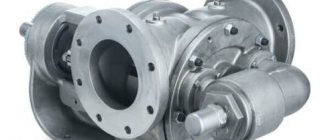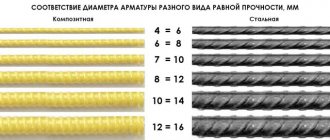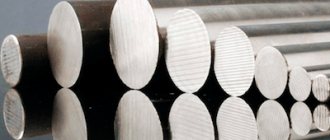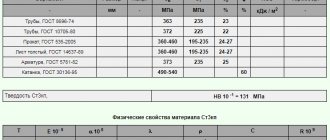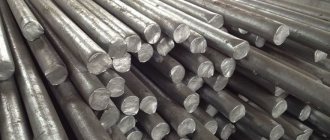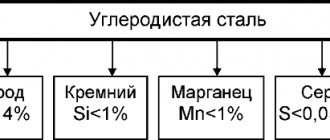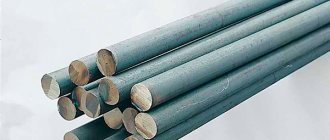Steel alloy 08PS
This grade is classified as high quality carbon steel for structural purposes.
The material contains chemical elements - manganese, copper, arsenic, nickel, sulfur, carbon, phosphorus, chromium, silicon. The technological and physicochemical characteristics of steels and alloys may differ due to differences in their composition. This feature is also important when alloys are produced for various needs, and it is used to the fullest. For example, in order to significantly expand the areas of standard applications, technology exists that makes it possible to modify the standard properties of ferrous metals, primarily iron. As a rule, it is possible to add ductility or, conversely, strength to the alloy, as well as corrosion resistance. Certain technical requirements are imposed on alloys that are used as a base, since in order to produce units and parts, certain types of loads are required, as well as certain operating conditions.
Steel grade 08ps can serve as a convincing example. Products that are made on the basis of this alloy, together with a certain combination of other elements, can be used under conditions of chemical exposure or processing, and they can also be used in conditions of high temperatures.
Characteristics of steel grade 08ps
08ps — High-quality structural carbon steel, weldable without restrictions, welding is carried out without heating and without subsequent heat treatment, welding methods: manual arc welding, automatic submerged arc welding and gas protection, KTS, ESW.
For welding with a thickness of more than 30 millimeters, heating and subsequent heat treatment are recommended; it is not prone to flake sensitivity, and there is no tendency to temper brittleness. Cutting machinability in the hot-rolled state at НВ 131 and σв=315-410 MPa, Kυ hard alloy. = 2.1 and Kυ b.st. = 1.65, has found its application in load-bearing elements of welded and non-welded structures and parts operating at positive temperatures, and is actively used in general construction solutions. This grade of steel is used to produce spare parts and parts that are subjected to chemical-thermal treatment and constant mechanical loads. Also, washers, forks, bushings, lugs, rods, various gaskets, electric-welded pipes and elements for them, cold-rolled strip, low-carbon steel wire, as well as medium- and high-carbon steel are made from it. In addition, the alloy is used as a cladding layer.
Note. The metal can be strengthened by subjecting it to hardening treatment using regulated or controlled rolling and accelerated cooling. Hardening does not have any negative consequences for the alloy.
Forging is carried out at temperatures from 1250 to 800 0C, cooling is carried out in air.
Interpretation of steel grade 08ps
Interpretation of steel: Structural high-quality carbon steels are produced in converters or in open-hearth furnaces. The designation of these steel grades begins with the word “Steel”. The next two numbers indicate the average carbon content in hundredths of a percent; the numbers 08 indicate a carbon content of about 0.08 percent. The letters after the carbon content indicate the degree of deoxidation: ps - semi-calm. Semi-quiet steel is an intermediate link in quality indicators between boiling and calm steel; it crystallizes without boiling with semi-deoxidation indicators.
Delivery 08ps
| Long and shaped rolled products | GOST 1133-71; GOST 10551-75; GOST 2879-2006; GOST 9234-74; GOST 2591-2006; GOST 11474-76; GOST 2590-2006; |
| Sheets and strips | GOST 82-70; GOST 19904-90; GOST 16523-97; GOST 14918-80; GOST 19903-74; GOST 103-2006; |
| Ribbons | GOST 3560-73; |
| Long and shaped rolled products | GOST 8560-78; GOST 10702-78; GOST 8559-75; GOST 1050-88; GOST 7417-75; GOST 14955-77; GOST 1051-73; |
| Sheets and strips | GOST 4405-75; GOST 1577-93; GOST 13345-85; GOST 4041-71; GOST 9045-93; |
| Ribbons | GOST 503-81; GOST 10234-77; GOST 19851-74; |
| Steel pipes and connecting parts for them | GOST 20295-85; GOST 3262-75; GOST 10705-80; GOST 10704-91; GOST 10707-80; GOST 24950-81; |
| Low carbon steel wire | GOST 5663-79; GOST 1526-81; GOST 792-67; |
| Medium and high carbon steel wire | GOST 3920-70; GOST 7372-79; GOST 9389-75; GOST 26366-84; GOST 9850-72; |
Chemical composition of steel 08ps
| C | Si | Mn | Ni | S | P | Cr | Cu | As |
| 0.05 — 0.11 | 0.05 — 0.17 | 0.35 — 0.65 | up to 0.3 | up to 0.04 | up to 0.035 | up to 0.1 | up to 0.3 | up to 0.08 |
Temperature of critical points 08ps
| Critical point | Temperature |
| Ac1 | 732 |
| Ac3(Acm) | 874 |
| Ar3(Arcm) | 854 |
| Ar1 | 680 |
Mechanical properties of steel 08ps
Mechanical properties of steel 08ps according to GOST 535-2005 regulations is sold in the form of soft strip and rolled sheets with a cross section of up to 4 mm, from 0.05 to 1.5 mm, from 1.5 to 2.0 mm, over 2 mm to 2.9 mm, as well as from 3.0 to 4.0 mm. Rolled thickness: 0.05-1.5 mm, tensile strength: 310-440 MPa, relative elongation: >17%. Rolled thickness: 1.5-2.0 mm, tensile strength: 310-440 MPa, relative elongation: >18%. Rolled thickness: 2.0-2.9 mm, tensile strength: 310-440 MPa, relative elongation: >20%. Rolled thickness: from 3.0 to 4.0 mm, tensile strength: 310-440 MPa, relative elongation: >24%. Below is the data in a tabular version according to GOST 16523:
| GOST | Delivery status | Section, mm | σ0.2 (MPa) | σв(MPa) | δ5 (δ4)(%) | ψ % |
| no less | ||||||
| 1577-93 | Normalized bands | 6-25 | 175 | 295 | 35 | 60 |
| 16523-70 (Transverse samples) | Hot rolled sheets | Up to 2 | — | 275-390 | -24 | — |
| 2-3,9 | -26 | |||||
| Cold rolled sheets | Up to 2 | — | 275-390 | -25 | — | |
| 2-3,9 | -28 | |||||
Mechanical properties of steel 08ps at a temperature of 200C
| GOST | Delivery status | σв(MPa) | δ5 (δ4)(%) | ψ % | NV |
| no less | |||||
| 4041-71 (Transverse samples) 9045-80 (Transverse samples) 10234-77 503-81 10702-78 | Heat-treated sheets: 3rd category cold-rolled Flattened strip Cold-rolled strip: extra-soft soft semi-hardened cold-worked Calibrated and calibrated steel with special finishing: after annealing or tempering after spherodizing annealing cold-worked | No more than 365 255-365 No more than 450 245-390 315-440 370-510 440-590 310-410 290-390 370 | 36 (28) 20 (23) (17) (7) (4) — — 8 | — — — — 60 60 60 | 98 — — — 131 131 17 |
Physical properties of steel 08ps
| Temperature | E 10- 5 | a 10 6 | l | r | C | R 10 9 |
| 0C | MPa | 1/Grad | W/(m deg) | kg/m3 | J/(kg deg) | Ohm m |
| 20 | 2,03 | |||||
| 100 | 2,06 | 12.5 | 60 | 7846 | 482 | 178 |
| 200 | 1.83 | 13.4 | 56 | 7814 | 498 | 252 |
| 300 | 14 | 51 | 7781 | 514 | 341 | |
| 400 | 14.5 | 47 | 7745 | 533 | 448 | |
| 500 | 14.9 | 41 | 7708 | 555 | 575 | |
| 600 | 15.1 | 37 | 7668 | 584 | 725 | |
| 700 | 15.3 | 34 | 7628 | 626 | 898 | |
| 800 | 30 | 7598 | 695 | 1073 | ||
| 900 | 27 | 7602 | 703 | 1124 | ||
| 1000 | 695 |
Technological properties of steel 08ps
| Weldability: | no limits. |
| Flock Sensitivity: | not sensitive. |
| Tendency to temper brittleness: | not inclined. |
Grade strength group 08ps
| K270V | 08ps |
Properties
Steel 08ps is strong, not prone to temper brittleness, and can be welded without restrictions or heat treatment.
- Rockwell hardness – 10-1=131 MPa. It is measured by the depth of penetration of a diamond cone into the metal.
- Brinell hardness – 196 MPa. It is measured by pressing a steel ball into the metal.
- The density of the material is in the range from 7846 to 7602 kg/m3, which is a typical indicator for carbon steel in general.
- Tensile strength – in the range of 270-412 MPa.
- The yield strength is 196 MPa at a temperature of 20C.
Technological properties of steel 08ps
| Rolled metal grade | Substitute |
| 08PS |
| Flock sensitivity | Weldability | Cooking methods | Tendency to temper brittleness |
| not sensitive | no limits | KTS, RDS, ADS (flux + shielding gas) | not inclined |
Mechanical properties of steel 08ps
| Assortment | GOST | Dimensions thickness, diameter | Heat treatment | at | d5 | sT | sв |
| mm | % | % | MPa | MPa | |||
| Rental | 1050- 88 | up to 80 | normalization | 196 | 320 | ||
| calibrated hardened. | 10702- 78 | 370 | |||||
| Bar calibers | 10702- 78 | annealing | 310- 410 | ||||
| Band | 4041-71 | from 6 to 60 | 196 | 320 | |||
| Sheet | 4041- 71 | from 4 to 8 | There is | 270- 410 |
Mechanical properties of steel 08ps depending on the section
| GOST | Delivery status | σв (MPa) | δ5 ( δ4 )(%) | ψ % | NV |
| no less | |||||
| 4041-71 (Transverse samples) 9045-80 (Transverse samples) 10234-77 503-81 10702-78 | Heat-treated sheets: 3rd category cold-rolled Flattened strip Cold-rolled strip: extra-soft soft semi-hardened cold-worked Calibrated and calibrated steel with special finishing: after annealing or tempering after spherodizing annealing cold-worked | No more than 365 255-365 No more than 450 245-390 315-440 370-510 440-590 310-410 290-390 370 | 36 (28) 20 (23) (17) (7) (4) — — 8 | — — — — 60 60 60 | 98 — — — 131 131 179 |
Properties according to GOST 1050-2013 standard
| Yield strength, σ0.2, MPa | Tensile strength, σв, MPa | Elongation at break, δ5, % | Relative narrowing, ψ, % |
| > 175 | > 290 | > 35 | > 60 |
Properties according to GOST 10702-78 standard
| Tensile strength, σв, MPa | Hardness, HB | Relative narrowing, ψ, % | Draft groups | Tensile strength, σв, MPa | Hardness, HB | Relative narrowing, ψ, % | Draft groups |
| Size: < 30 mm | Size: > 30 mm | ||||||
| 310-410 | 115 | 60 | 50,66,66I | 310-410 | 115 | 60 | — |
| After spheroidizing annealing | |||||||
| Size: < 30 mm | Size: > 30 mm | ||||||
| 290-390 | 115 | 60 | 50,66,66I | 290-390 | 115 | 60 | — |
| Tensile strength, σв, MPa | Hardness, HB | Relative narrowing, ψ, % | Elongation at break, δ5, % | Draft groups | Tensile strength, σв, MPa | Hardness, HB | Relative narrowing, ψ, % | Elongation at break, δ5, % | Draft groups |
| Size: < 30 mm | Size: > 30 mm | ||||||||
| 370 | 131 | 60 | 8 | 50,66,66I | 370 | 131 | 60 | 8 | — |
| Cold-worked and calibrated with special surface finish | |||||||||
| Size: < 28 mm | Size: > 28 mm | ||||||||
| 370 | 179 | 8 | 60 | 50,66,66I | 370 | 179 | 8 | 60 | — |
Properties according to standard TU 14-152-42-98
| Assortment | Tensile strength, σв, MPa | Elongation at break, δ5, % |
| After heat treatment | ||
| Pipes | 260 | 30 |
Material 08ps – hardness, MPa
| Assortment | GOST | HB 10-1 |
| Rental | 10702-78 | |
| Hot rolled | 115 | |
| Calibrated | 143 | |
| Sheet | ||
| After heat treatment | 4041-71 | 109 |
| Thick | 1577-93 | 131 |
Temperature of critical points, (0C)
| Critical points | Ac1 | Ac3 | Ar1 | Ar3 |
| Temperature | 732 | 874 | 680 | 854 |
Physical properties of steel 08ps
| T | R 109 | E 10-5 | l | a106 | r | C |
| hail | Ohm m | MPa | W/(m deg) | 1/Grad | kg/m3 | J/ (kg deg) |
| MPa | ||||||
| 100 | 178 | 2.03 | 12.5 | 7846 | 482 | |
| 200 | 252 | 2.06 | 13.4 | 7814 | 498 | |
| 300 | 341 | 1.83 | 7781 | 514 | ||
| 400 | 448 | 14.5 | 7745 | 533 | ||
| 500 | 575 | 14.9 | 7708 | 555 | ||
| 600 | 725 | 15.1 | 7668 | 584 | ||
| 700 | 898 | 15.3 | 7628 | 626 | ||
| 800 | 1073 | 7598 | 695 | |||
| 900 | 1124 | 7602 | 703 | |||
| 1000 | 695 |
Technological properties
Steel is highly reliable; this ensures the absence of defects during casting, has excellent weldability, and is not prone to brittleness.
These properties make it possible to use methods of bending the material both manually and on specialized machines.
Tempering brittleness
Steel 08 PS is not prone to temper brittleness, since its hardness is HB 10-1 = 131 MPa. In addition, the material does not react to flocking.
Weldability
The steel is characterized by excellent weldability properties in the absence of preheating, and microcracks do not occur on the plane.
In welding work, any technique can be used. If the thickness of the sheets is large, multilayer welding will be used.
Corrosion resistance: does it rust or not?
In general, 08 PS steel is corrosion resistant and does not rust for a long time. But if the manufacturing technology is broken, corrosion will appear in the near future.
Mechanical processing and preparation of steel 08PS
Cleaning. Produced using machines and metal hand brushes. The use of machines significantly increases efficiency.
Cutting. It is recommended to use machines that can simultaneously cut several sheets or reinforcement bars. Metal cutting can also be done using hand press shears.
Flexible. Used to produce some products (spirals, clamps, reinforcing bars). Bending is carried out using powered and manual machines and homemade devices.
Technical properties
Since the material itself is very strong and hard, it behaves quite adequately against the background of various loads.
But if the load is too high, the steel can be deformed, which is subsequently leveled out. This should be kept in mind.
Rockwell hardness
The measurement takes place using a specially marked scale: 60, 100, 150 kgf.
Essentially, the method is based on measuring the depth of penetration of a diamond cone into the test material. The shallower the depth, the harder the material.
Unit of measurement HRСЭ, HRB. Thus, the Rockwell hardness of steel is 10 – 1 = 131 MPa.
Brinell hardness
A steel ball d = 2.5 is pressed into the material being tested; 5 and 10 mm. Unit of measurement HB. In the melting state, the hardness of the metal changes and becomes equal to 196 MPa at 20 degrees (up to 175 MPa in proportion to the increase in temperature).
What is the density of the material?
The density of the alloy ranges from 7846 to 7602 kg/m3. These values are typical for mild steel.
But the value is approximate, it is not recommended to use it for design purposes.
Explanation of the name
The steel grade is 08PS, where 08 (0.8%) is the designation of carbon content. DP is the degree of deoxidation. There are three degrees: boiling material, calm and semi-calm. 08Ps is a semi-calm alloy that combines the positive qualities of boiling and calm alloys.
Chemical composition
The chemical composition of steel is regulated by GOST 1050-88 (also GOST 4041-71 and GOST 9045-93). The composition includes the following elements:
- Carbon (min 0.05 max 0.11%). The degree of hardness of the metal, its strength and weldability depend on the carbon content. The remaining components affect the characteristics of steel during operation.
- Silicon (Si) (min 0.05 max 0.17%).
- Manganese (Mn) (min 0.35 max 0.65%).
- Chromium (Cr) (max 0.10%).
- Arsenic (As) (max 0.08%).
- Nickel (Ni) (max 0.3%).
- Sulfur (S) (max 0.4%).
- Phosphorus (P) (max 0.035%).
Tensile strength
The tensile strength of steel is in the range of 270–412 MPa.
Yield strength
The yield strength means the magnitude of the load, under the influence of which the shape of the sample changes by 0.2%.
The yield strength is prescribed in the case of long rolled metal.
For steel 08 PS it is 196 MPa at 20 degrees.
Operating temperature
The initial operating temperature of steel is 1250 degrees. The final one is 800 degrees. High-temperature processing improves the properties of the material.
In this case, there is no need to add other chemical elements. This treatment is used in the production of load-bearing structures or to impart strength to the alloy.
To lower the temperature of steel, water or oil is used. Sometimes cooling occurs simply in air. This hardening imparts hardness. During annealing, the structure of the material is leveled and increased plasticity is removed. Tempering eliminates the stress inside the alloy.
Steel 08ps
Our website presents a variety of metal products that can be purchased to order in any quantity. Also on the Atlant Metal portal you will find a lot of useful information about various products, compositions and grades of steel. From this article you will learn facts about steel grade 08ps, which is a high-quality structural carbon steel. On our website it is easy to order products made from this material, as well as from steel grades 08ps5 and 08ps6.
In the name St08ps “St” is steel. The numbers that follow conventionally indicate the amount of carbon in the composition (in percent, in tenths)
The “PS” in the name stands for semi-tempered steel, one of three methods for deoxidizing steel. There is also boiling and calm.
Treatment
Steel grade 08PS can be subjected to various types of processing. We are talking about both thermal and mechanical operations. Let's take a closer look at each of the options.
Thermal
Heat treatment of material marked 08PS helps improve its characteristics. In this case, there is no need to introduce other additional components into the alloy. Upon completion of the procedure under consideration, the strength level of the metal increases noticeably. Heat treatment is often used for those workpieces that are planned to be used in load-bearing structures in the future. For the steel processing under consideration, steps such as hardening, tempering and annealing can be used.
The hardening operation helps the material obtain the required level of rigidity. When the hardening stage is completed, the workpieces are allowed to be cooled under various conditions. Both water and oil media are suitable.
To eliminate the excess stress that appears inside the metal structure, they resort to an operation such as tempering. Upon completion of this processing stage, products made from 08PS alloy become much harder, and their strength level also increases. To effectively align the internal structure, as well as get rid of excessive levels of ductility, the alloy undergoes an annealing operation.
Mechanical
To obtain rolled steel parts, it is advisable to thoroughly clean the surfaces from scale, as well as oil traces and other similar contaminants. For this purpose, it is allowed to use both brushes with metal bristles and components of small-scale mechanization. For example, you can use a grinder.
In the procurement areas of production that use rolled metal from alloy 08PS, special guillotine-type shears are used, as well as special Geller sawing machines, press shears and other similar technical equipment. With such equipment it is possible to cut rolled metal. We are talking about both profile and sheet products.
The technological features of 80PS make it possible to use this raw material for the production of parts using bending methods. This operation can be performed using a variety of devices. Both simple manual models of bending machines and specialized high-tech machines are suitable. Of course, working with the latter is much easier, and much less time is spent bending steel.
To process mechanical parts and parts made from raw materials marked 08PS, you do not need to use any special specialized tools or devices.
It is allowed to carry out the operations under consideration using hard alloys, for example, T15K6.
Steel processing 08ps
Steel 08ps is an upgradeable alloy, i.e. subject to thermal and chemical-thermal treatment to improve performance characteristics.
Weldability and forging of steel 08PS
The initial forging temperature is 1250C, the final temperature is 800C. Cooling is recommended to be done in air. The metal has excellent weldability without restrictions, with the exception of parts that have undergone chemical-thermal treatment. Welding methods: RDS, ADS (flux and gas protection), KTS.
Heat treatment of steel 08PS
Rolled steel 08ps is subjected to three types of heat treatment - annealing, hardening and tempering. Depending on the purpose, treatment helps:
- normalize plasticity (annealing);
- increase hardness (hardening);
- eliminate internal tension (vacation).
Mechanical processing and preparation of steel 08PS
Steel 08ps is subjected to cleaning, cutting and bending. Cleaning is carried out using machine tools or manually using metal brushes. Manual shears are used for cutting, and enterprises use machines capable of cutting several sheets at once. Bending is necessary for the manufacture of some parts; it can be done using machine, manual or home-made equipment.
Main characteristics and properties of steel 08PS
Negative in the floc sensitivity category.
It has increased strength and there is no risk of brittleness during tempering. There are no restrictions when carrying out the process of welding parts, which does not require heating and further temperature treatment.
The following types of welding are possible:
KTS, RDS, ADS, provided by the use of gas. Since 08ps steel is difficult to weld, in order to achieve the required level of connections that are created by welding, it is necessary to resort to additional measures. The metal must be heated to certain temperatures - from two hundred to three hundred degrees - an important condition of the technological process, after which an annealing operation and additional heat treatment are provided.
The forging temperature of steel is 08 ps: at the start - 1250, at the end of forging - 800. Sections up to 300 mm are cooled in air.
Steel 08 ps, being a fairly strong, reliable and hard metal, is capable of withstanding quite large loads, without losing its shape or deforming. Thanks to these features of steel 08 ps, it is highly valued and used in a wide variety of parts, tools, designs. Under a certain load on steel 08ps, the metal can “react” in different ways: without changing
The shape either becomes slightly deformed, accepts the load and returns to its original state after the load is removed, or maintains the changed shape after the load is removed. In this case, the shape of the changed part must remain constant, and the state of the metal part itself will become “stressed”.
Classification of material and application of grade 08ps
Brand: 08ps Material classification: High-quality structural carbon steel Application: for gaskets, washers, forks, pipes, as well as parts subjected to chemical heat treatment - bushings, lugs, rods.
Chemical composition of the material 08ps in percentage terms
| C | Si | Mn | Ni | S | P | Cr | Cu | As |
| 0.05 — 0.11 | 0.05 — 0.17 | 0.35 — 0.65 | up to 0.3 | up to 0.04 | up to 0.035 | up to 0.1 | up to 0.3 | up to 0.08 |
Mechanical properties 08ps at a temperature of 20oC
| Assortment | Size | Eg. | sв | sT | d5 | y | KCU | Thermal change |
| — | mm | — | MPa | MPa | % | % | kJ/m2 | — |
| Heat treated sheet, GOST 4041-71 | 4 — 8 | 270-410 | 32 | |||||
| Pipes, GOST 10705-80 | 314 | 196 | 25 | |||||
| The rental is calibrated. cold-worked, GOST 10702-78 | 370 | 8 | 60 | |||||
| Calibrated steel, GOST 10702-78 | 314-412 | 60 | Annealing | |||||
| Strip, GOST 1577-93 | 6 — 60 | 290 | 175 | 35 | 60 | Normalization |
Technological properties 08ps
| Weldability: | no limits. |
| Flock Sensitivity: | not sensitive. |
| Tendency to temper brittleness: | not inclined. |
Explanation of symbols, abbreviations, parameters
| Mechanical properties : | |
| sв | — Short-term strength limit, [MPa] |
| sT | — Proportional limit (yield strength for permanent deformation), [MPa] |
| d5 | — Elongation at break, [%] |
| y | — Relative narrowing, [%] |
| KCU | — Impact strength, [kJ/m2] |
| HB | — Brinell hardness, [MPa] |
| Physical properties: | |
| T | — Temperature at which these properties were obtained, [Deg] |
| E | — Modulus of elasticity of the first kind, [MPa] |
| a | — Coefficient of thermal (linear) expansion (range 20o-T), [1/degree] |
| l | — Thermal conductivity coefficient (heat capacity of the material), [W/(m deg)] |
| r | — Material density, [kg/m3] |
| C | — Specific heat capacity of the material (range 20o-T), [J/(kg deg)] |
| R | — Electrical resistivity, [Ohm m] |
| Weldability: | |
| no limits | — welding is performed without heating and without subsequent heat treatment |
| limited weldability | — welding is possible when heated to 100-120 degrees. and subsequent heat treatment |
| difficult to weld | — to obtain high-quality welded joints, additional operations are required: heating to 200-300 degrees. during welding, heat treatment after welding - annealing |
Chemical composition
The basis of 08kp steel is iron, it occupies 98% of the alloy. All other elements, including carbon, fit into the remaining 2%.
- silicon is an alloying element added to give the metal corrosion resistance, elasticity, strength, and scale resistance;
- manganese is one of the main deoxidizers, removes gases, prevents the formation of bubbles and cavities during steel hardening at the final stages of production, helps increase the strength and hardness of the metal, but negatively affects ductility;
- copper is an additive, especially useful in construction steels, increases the corrosion resistance and strength of the material;
- arsenic - is a random impurity, can slightly improve anti-corrosion properties, but leads to cold brittleness, therefore it is considered an undesirable element;
- nickel is an alloying element and deoxidizing agent, promotes better hardenability, protects against corrosion, imparts strength and hardness, and does not affect ductility;
- sulfur – negatively affects the physical, chemical and mechanical properties of steel, increases the red brittleness of steel, forms an insoluble compound iron sulfide, which disrupts the structure of steel, leading to cracks and tears;
- phosphorus - worsens ductility and toughness, its harmful effects are especially noticeable at critically high and low temperatures, steel becomes cold-brittle and red-brittle;
- chromium is an alloying element that protects against corrosion, increases heat resistance and heat resistance.
| Silicon | Manganese | Copper | Arsenic | Nickel | Sulfur | Carbon | Phosphorus | Chromium |
| 0,05-0, | 0.35-0.65 | 0.3 | 0.08 | 0.3 | 0.4 | 0.05- 0.11 | 0.035 | 0.1 |
Legend
Mechanical properties
HBKCUyd5sTsв
| MPa | kJ/m2 | % | % | MPa | MPa |
| Brinell hardness | Impact strength | Relative narrowing | Elongation at break | Yield strength | Short-term strength limit |
Weldability
| Difficult to weld | Heating | Heat treatment | |
| No limits | No | up to 100–1200С | 200–3000С |
| Welding with restrictions | No | There is | annealing |
Physical properties
RrClaET
| Ohm m | Resistivity |
| kg/m3 | Density |
| J/(kg deg) | Specific heat |
| W/(m deg) | Coefficient of thermal conductivity |
| 1/Grad | Linear expansion coefficient |
| MPa | Elastic modulus |
| Hail. | Temperature |
Chemical composition
Decoding the steel grade 08ps indicates the chemical composition and structure of the alloy:
- the first two digits indicate the approximate mass fraction of carbon in the alloy;
- the sign “ps” is one of the indicators of the degree of deoxidation of steel, which in this case stands for “semi-quiet”.
Deoxidation is the process of removing oxygen dissolved in liquid metal, as a result of which its harmful effects are reduced:
- mild steels have the highest degree of deoxidation;
- boiling – characterized by fragility and low rates of weldability and corrosion resistance;
- semi-quiet alloys occupy an intermediate position in terms of quality indicators.
According to GOST 1050-88, the content of each element in the alloy in mass fractions is expressed by the following figures:
- carbon – from 0.05 to 0.11, the surface hardness and structural strength of the metal depend on this element;
- silicon, which increases elasticity and resistance to oxidation – 0.05-0.17;
- manganese - 0.35-0.65, it improves the quality of steel, helping to reduce the concentration of oxygen and sulfur.
Small amounts of random impurities are present in the alloy:
- chromium – 0.1;
- nickel – up to 0.25;
- copper – 0.25;
- arsenic – up to 0.08.
Their main source is steel scrap. Random impurities can have a significant impact on the properties of the alloy, so their content is limited depending on the specified properties.
Sulfur and phosphorus are permanent impurities whose presence is inevitable. But their quantities are so small that they do not have any significant effect on the properties of the metal:
- sulfur – 0.04;
- phosphorus – 0.035.
Decoding
Steel grade 08ps indicates the chemical composition of the alloy, the quality of the alloy in terms of the concentration of harmful impurities and the degree of deoxidation.
- If the word “steel” is used in the marking, it means the alloy is of high quality. The quality of carbon steel depends on the degree of sulfur and phosphorus content in the composition. According to this indicator, steels are of ordinary quality (st), high-quality (steel), high-quality (A) and especially high-quality (SH).
- The number 08 means carbon content in hundredths of a percent - 0.08%. The carbon content is low, steel 08ps is classified as low-carbon or soft. The strength and hardness of such steel are low, but its advantages are ductility and impact strength, making it resistant to dynamic (shock) loads.
- The marking “ps” - semi-quiet - indicates the average degree of deoxidation of the alloy. According to the degree of deoxidation, steels are classified as calm, semi-calm and boiling. Calm steel is characterized by a minimal amount of impurities and a uniform structure without gas bubbles and pores. Boiling steel contains the largest number of impurities; its structure is heterogeneous and porous. Semi-quiet steel occupies an intermediate position between them - it contains impurities and porosity, but to a lesser extent than boiling steel.
The markings of carbon steels often do not indicate any chemical elements other than carbon. This does not mean that there are no other elements there, but only indicates their insignificant quantity, which practically does not affect the characteristics of the steel.
Application
The steel alloy can be machined satisfactorily. When turning, it does not provide a clean surface, and when cutting threads, it does not allow high-quality execution of small steps. Therefore, to improve machinability, 08ps steel is often subjected to normalization and cold working.
It is widely used for the manufacture of products that do not require heat treatment, and for cladding bodies, machines and units. Also, 08ps steel is used for the production of cemented parts, the operating conditions of which require high surface hardness and wear resistance while maintaining the viscosity of the core. On an industrial scale, it is used to produce washers and brackets, rods and cups, lugs and stops, rollers and shells, disks and bushings, as well as other non-critical and unloaded parts.
Cold rolled sheets - steel grades, classification, application, GOST
Cold-rolled sheet is a type of rolled metal produced from hot-rolled sheet by cold rolling. The main consumers of HC sheets are the construction and engineering industries. Mechanical engineering uses a huge range of parts made by cold stamping from cold steel sheets, as well as critical parts and structures for which the cleanliness of the sheet surface is important. In construction, HC sheet is popular due to its excellent weldability.
Cold rolled sheet differs from hot rolled sheet by additional pressure treatment. This is a rather complex and energy-intensive technological process, leading to increased rental costs. But thanks to a more even and smooth surface, limited sheet thickness and density, cold rolled steel will always have its buyers.
Cold rolled steel grades
For the manufacture of cold steel sheets, mainly ductile steel is used, because These are the alloys that are easiest to process by pressure. Cold rolled products are made from the following grades:
- St20kp/ps;
- St25;
- St30;
- St35;
- St40;
- St45;
- St08ps/kp;
- St10kp/ps;
- St15kp/ps.
Based on the type of source material, cold-rolled sheets are divided into two types: from high-quality steel with low carbon content; made of ordinary quality steel and high-quality carbon steel.
The following types of cold rolled products are produced from steel 08sp/ps/kp:
- Sheet HC GOST 19904
- Sheet HC GOST 16523
- Sheet HC GOST 9045
Classification according to drawing ability
- Very deep (VG);
- Complex (CB);
- Particularly difficult (OSV);
- Very particularly complex (VOSV).
Application of HK Sheet
Cold-rolled sheets are preferred to hot-rolled sheets wherever the surface quality of the steel is required. The scope of application of cold rolling is very wide, it includes:
- construction;
- mechanical engineering;
- shipbuilding;
- instrument making;
- aircraft manufacturing;
- electric power industry;
- processing industry;
- production of agricultural machinery.
Metal tiles and other profile sheets, perforated sheets, galvanized sheets and polymer-coated sheets are made from HC sheets.
Analogues and assortment
The closest domestic substitute for steel grade 08ps is alloy 08. Foreign analogues must come with certificates of compliance with standards. Among them the most popular:
- A620, 1008, A622 - United States;
- GC01, DC04GT, DD11, St12, StW24, UQSt36 – Germany;
- SPHE – Japan;
- DC01 – European Union;
- 3C – France;
- 08F – China;
- 11304 – Czech Republic;
- O – India.
The range of steel supplied to the rolled metal market is regulated by various GOSTs. It consists:
- from ground and calibrated rod;
- sheets of thin and thick;
- ribbons and strips;
- forgings;
- silverfish;
- shaped and long products;
- pipes of different diameters.
Properties of steel
With an increase in temperature from 20 to 900 degrees, the physical parameters of 08ps steel change in one direction or another:
- density – from 7846 to 7602 kg/m3;
- elastic modulus – from 2.03 to 1.83*10-5 MPa;
- linear expansion coefficient – 12.5-15.3 1/deg;
- heat capacity – 60-27 W/m*deg;
- beat heat capacity – 482-703 J/kg*deg;
- beat electrical resistance – 178-1124*109 Ohm*m.
The alloy is characterized by high mechanical properties:
- hardness HB 10-1 – 131 MPa;
- yield strength of steel 08ps for elastic deformation at 20 degrees – 196 MPa;
- short-term strength limit – 270-412 MPa;
- temporary tensile strength – 310-410 MPa, depending on the thickness of the part;
- elongation at break – 35%;
- narrowing – 60%;
- forging temperature range is 1250-800 degrees.
The conditional yield strength is taken to be the value of the load, under the influence of which the shape of the sample changes by 0.2%. This parameter depends on various factors:
- shape and thickness of the product;
- heat treatment mode;
- amount of impurities;
- production technologies;
- temperature at which the parameter is measured;
- type or direction of load.
Therefore, the yield strength is indicated for long rolled metal products, the production technology of which exactly corresponds to GOST. Technological properties include:
- good weldability without preheating and cracking;
- insensitivity to flocking;
- lack of tendency to temper brittleness.
Any technology can be used in welding work. When the thickness of the sheets being welded is large, a multi-layer procedure is used. However, after heat treatment, the surface layer is saturated with carbon, which significantly reduces the metal’s ability to weld.
Features of heat treatment
The characteristics and application of 08ps steel depend on the type of product and the method of heat treatment. For example, the hardness index of NV is:
- for calibrated rod – 143 MPa;
- thick sheet – 131 MPa;
- transverse samples – 98 MPa.
For heat treatment, standard procedures are used:
- hardening gives the alloy increased hardness;
- tempering helps relieve internal stress, thereby increasing the strength of the metal;
- after annealing, the structure of the material is leveled and excessive plasticity is eliminated;
- For cooling, the optimal medium is selected - water, oil.
Oil is often used as a cooling medium, as it helps to reduce temperatures evenly and prevents the occurrence of defects. Heat treatment modes are developed taking into account:
- thickness or section of the part;
- its purpose;
- values of critical points.
During heat treatment, all characteristics of 08ps steel are improved:
- after tempering at low temperature, internal stresses disappear;
- after annealing, the internal structure is leveled;
- mechanical strength increases.
In the process of mechanical processing, the surface of products is cleaned from scale and various contaminants using metal brushes or a grinder. To cut rolled metal, mechanical cutting devices are used. Many parts are obtained using the bending method using manual or special machines. When machining workpieces, hard alloys can be used.
Advantages and disadvantages
The main advantage of structural steel 08ps is the ability to withstand high loads over a long period of operation without plastic deformation or changes in the internal structure. Its widespread use is associated with:
- with high yield strength;
- ease of welding by all methods before heat treatment;
- significant surface hardness;
- lack of flake sensitivity and tendency to temper brittleness;
- affordable price.
Along with tangible advantages, there are also some disadvantages, for example:
- difficult weldability after heat treatment;
- the need for protection against corrosion when operating in conditions of high humidity.
Application area
Excellent technical characteristics combined with moderate cost have determined the widespread use of 08ps steel. It is in demand in the production of products that are intended for operation under conditions of high mechanical or thermal loads:
- pendants;
- washers;
- connecting plugs;
- gaskets and bushings;
- pipes of different diameters;
- fasteners;
- mounting tape;
- construction fittings;
- rack profiles;
- products having axial holes;
- rods, the surface of which is treated in different ways.
Steel grade 08ps is a high-quality and at the same time inexpensive alloy that meets all established standards.
Sources
- https://resursmsk.ru/stal-08ps
- https://resursmsk.ru/08ps
- https://xlom.ru/spravochnik/stal-08ps
- https://prompriem.ru/stati/stal-08ps.html
- https://stroy-podskazka.ru/stal/marki/08ps/
- https://c-met.ru/marki-metallov-i-splavov/stal-konstrukczionnaya/stal-konstrukczionnaya-uglerodistaya-kachestvennaya/08ps
- https://www.lsst.ru/spravochnik-metalloprokata/konstruktsionnaya-stal/stal-08ps/
- https://svarkaipayka.ru/material/stal/tehnicheskie-harakteristiki-uglerodistoy-stali-08ps.html
- https://metinvest-smc.com/ru/steel/stal-08ps/
